God, the creator of heaven and earth.
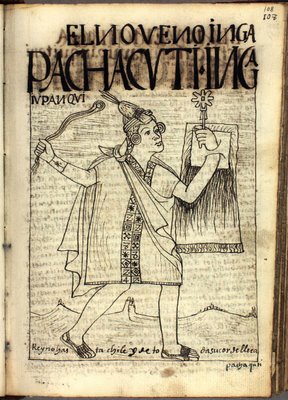
The ninth Inka, Pachacuti Inka.
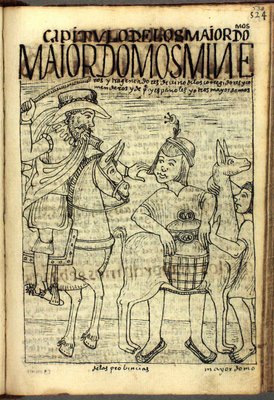
The royal overseer beats his native porter.
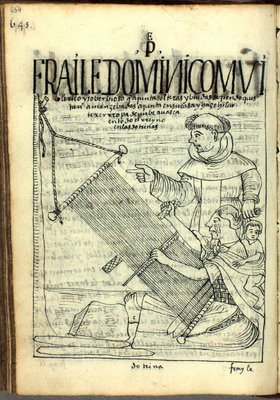
Wrathful, arrogant Dominicans force native women to weave for them.
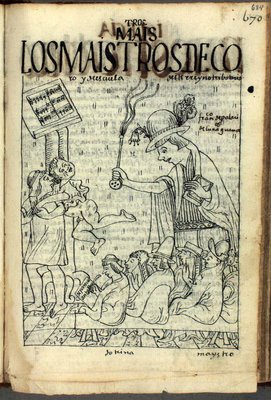
The cruel choir and school masters should teach their students
to read and write, so that they become good Christians.
to read and write, so that they become good Christians.
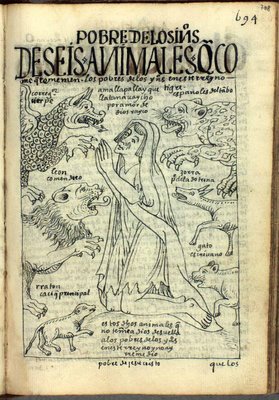
Six ungodly animals feared by the poor Indians of this kingdom:
the royal administrator, a serpent; the itinerant Spaniard,
a tiger; the encomendero, a lion; the parish priest, a fox;
the notary, a cat; and the native lord, a rodent.
the royal administrator, a serpent; the itinerant Spaniard,
a tiger; the encomendero, a lion; the parish priest, a fox;
the notary, a cat; and the native lord, a rodent.
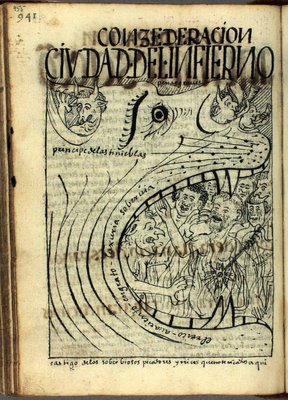
The city of hell, where fearless sinners are punished.

The mestizo offspring of parish priests being taken away to Lima.
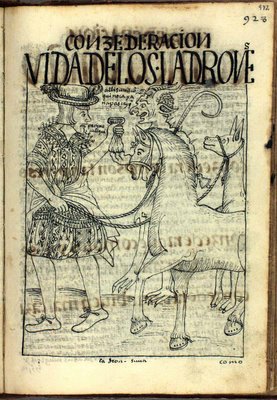
One of the many thieves who prosper in this kingdom.
'You will rob well. I'm going to help you,' the devil promises.
'Here are one hundred silver coins,' responds the thief.
'You will rob well. I'm going to help you,' the devil promises.
'Here are one hundred silver coins,' responds the thief.
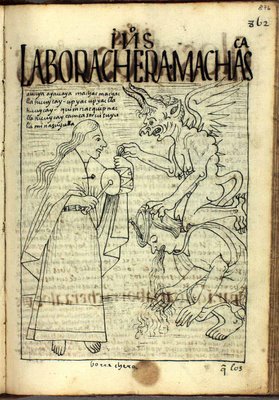
Indians 'speak with the devil' while practicing
a traditional Andean drinking ritual.
a traditional Andean drinking ritual.
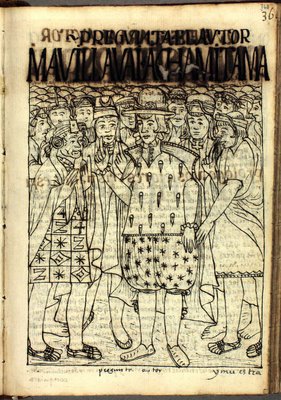
Guaman Poma says, 'But, tell me,' as he
inquires about the history of ancient Peru.
inquires about the history of ancient Peru.
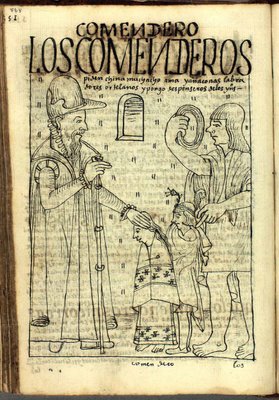
A Spanish encomendero demands many native servants.

Feast of the Inkas - wariqsa, dance, arawi,
song of the Inka. He sings with his red llama.
song of the Inka. He sings with his red llama.
The >1000 page 'Nueva Corónica y Buen Gobierno' {New Chronicle and Good Government) by Felipe Guaman Poma de Ayala was written down between about 1612 and 1616. This extraordinary document is part historical chronicle, part legal brief, part illustrated portrait of colonial destruction and part naive plea to the Spanish throne.
Guaman Poma was a full-blooded native from southern Peru with noble ancestry which he used as a basis to engage in unsuccessful litigation to wrest back control of lands awarded to his forbears. By contrast, he worked for the colonial administration, was an enthusiastic religious convert, wore spanish clothes, and was virtually fluent in spanish.
It was perhaps his failed petitions for land that prompted Guaman Poma to write his 'letter' to King Philip III of Spain -
"It contained, he said, everything he had been able to learn in his eighty years about Andean history and Spanish rule in the Andes. [..] Guaman Poma’s chronicle of more than a thousand pages had two main purposes: to give the king an account of ancient Andean history from the beginning of time through the reign of the Incas and to inform the monarch about the deepening crisis in Andean society that was a result of Spanish colonization."Guaman Poma crafted his spanish and quechua manuscript carefully, including nearly 400 pages of illustrations because he knew of the King's fondness for graphic work. He also included modern pagination and section headings in an attempt to make it easier for prospective publishers to print it as a book. He was hoping, by petitioning the King and having it published that his work would help to influence the behaviour of the colonial adminstrators.
There has been a large amount of scholarship directed towards Guaman Poma's work and although it is unknown whether King Philip III ever saw the manuscript, circumstantial evidence (references in unrelated court works and the fact that the Royal family in Denmark acquired the manuscript very early - in 1662) suggests that it probably did make it to the Royal Court.
'Nueva Corónica y Buen Gobierno' languished in the Danish Royal Library until it was rediscovered in 1908. It has been published several times since. The full manuscript is online with extensive commentary in both english and spanish but alas, there appears to be no english transcription available (although Languagehat points us to some snippets here).
The web version is exemplary however. In fact the author of the quotes above and below, Dr Rolena Adorno from Yale, considers that a greater amount of detail can be seen in the digitized manuscript than can be seen in the original with the naked eye.
"What is certain is that the Nueva corónica y buen gobierno provides us with the sustained, consistent perspective of a full-blooded native Andean who offers a rich, in-depth view of life in a specific, southern Andean Peruvian locale over a period of at least three decades. Perhaps the most remarkable dimension of the work is this consistency and comprehensiveness of viewpoint of its author and his expressiveness in word and image. In this regard, the manuscript in its digitalized version gives to the “archive of the world,” that Guaman Poma imagined, a unique and coherent native Andean account of the struggle to hang onto a disappearing Andean order and to reform, not overturn, the decadent foreign imperial regime that would replace it."
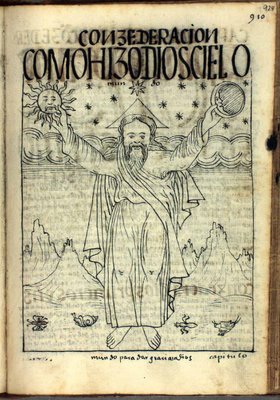



















2 comments :
Fascinating, thanks: I missed the MeFi & Languagehat spots about this & am grateful you posted these.
Great Guaman
Post a Comment
Comments are all moderated so don't waste your time spamming: they will never show up.
If you include ANY links that aren't pertinent to the blog post or discussion they will be deleted and a rash will break out in your underwear.
Also: please play the ball and not the person.
Note: only a member of this blog may post a comment.